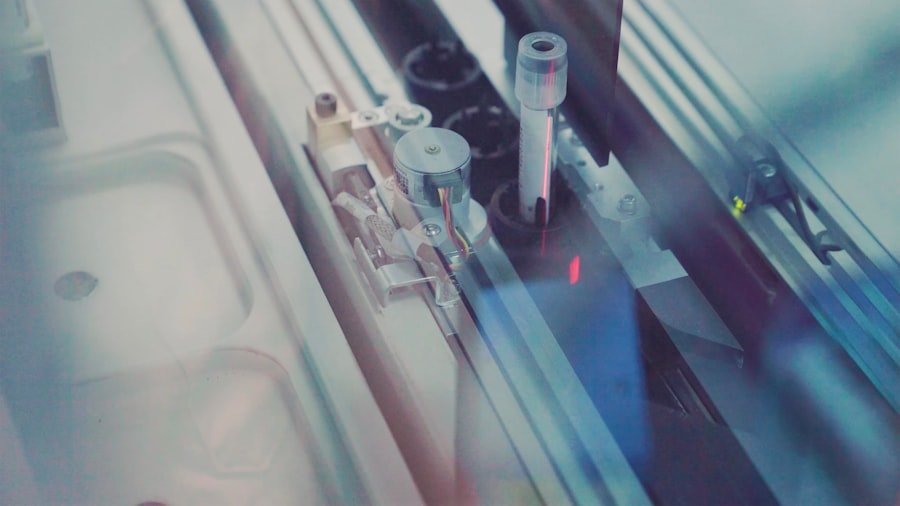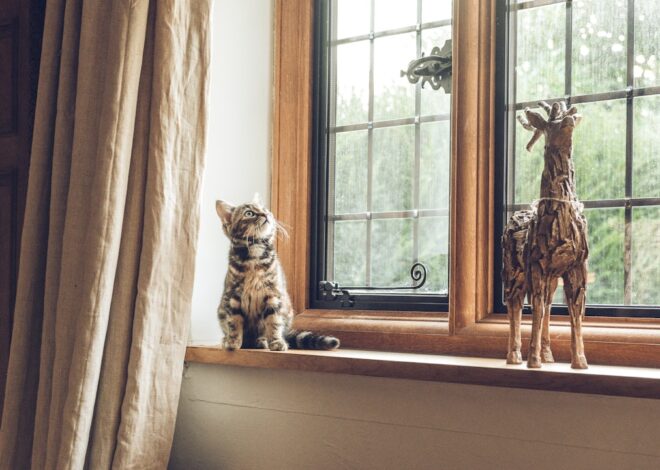
Bioengineered Fabrics: Lab-Grown Clothing
The textile industry has long been a cornerstone of human civilization, providing the materials necessary for clothing, shelter, and various other applications. However, traditional fabric production methods often come with significant environmental and ethical concerns, including pollution, resource depletion, and labor exploitation. In response to these challenges, bioengineered fabrics have emerged as a revolutionary alternative.
These innovative materials are created through biotechnological processes that utilize living organisms, such as bacteria, yeast, or plant cells, to produce fibers and textiles. This paradigm shift not only promises to reduce the ecological footprint of the fashion industry but also opens up new avenues for creativity and functionality in fabric design. Bioengineered fabrics encompass a wide range of materials, from those that mimic natural fibers like cotton and silk to entirely new substances that possess unique properties.
For instance, researchers have developed spider silk produced by yeast, which boasts remarkable strength and elasticity. This advancement represents just one facet of a burgeoning field that seeks to redefine how we think about clothing and textiles. As the world grapples with the consequences of fast fashion and unsustainable practices, bioengineered fabrics offer a glimpse into a more sustainable future where clothing can be produced with minimal environmental impact while still meeting consumer demands for quality and style.
Key Takeaways
- Bioengineered fabrics are created using living organisms such as bacteria, yeast, or algae to produce textiles in a lab setting.
- The process of growing clothing in a lab involves using biotechnology to manipulate microorganisms and cultivate them into fibers that can be woven into fabric.
- Bioengineered fabrics offer benefits such as sustainability, reduced water and land usage, and the potential for customizable and functional textiles.
- Lab-grown clothing has a lower environmental impact compared to traditional textile production, as it reduces the need for pesticides, water, and land.
- Challenges and limitations of bioengineered fabrics include scalability, cost, and the need for further research and development to improve the quality and performance of the textiles.
The Process of Growing Clothing in a Lab
The process of growing clothing in a lab is a fascinating intersection of biology and technology. At its core, this method involves manipulating the genetic material of microorganisms or plant cells to produce specific proteins or fibers that can be spun into textiles. For example, scientists can engineer bacteria to produce cellulose, a key component of many natural fibers.
By introducing specific genes into these organisms, researchers can enhance their ability to synthesize desired materials efficiently. Once the microorganisms are cultivated in controlled environments, they undergo fermentation processes similar to those used in brewing beer. During fermentation, the engineered organisms metabolize nutrients and produce the target fibers as byproducts.
After sufficient growth, these fibers are harvested and processed into fabrics through techniques such as spinning and weaving. This method not only allows for the production of high-quality textiles but also enables customization at a molecular level, paving the way for fabrics with tailored properties such as moisture-wicking capabilities or antimicrobial features.
Benefits of Bioengineered Fabrics

The benefits of bioengineered fabrics extend far beyond their innovative production methods. One of the most significant advantages is their potential for sustainability. Traditional textile manufacturing is notorious for its heavy reliance on water, chemicals, and fossil fuels.
In contrast, bioengineered fabrics can be produced using significantly fewer resources. For instance, lab-grown materials often require less water than conventional cotton farming, which is notorious for its high water consumption. Additionally, the controlled environments in which these fabrics are produced minimize the need for harmful pesticides and fertilizers.
Moreover, bioengineered fabrics can contribute to a circular economy by being designed for biodegradability or recyclability. Many traditional textiles end up in landfills, where they can take decades to decompose. In contrast, bioengineered materials can be engineered to break down more quickly and safely in natural environments.
This characteristic not only reduces waste but also mitigates the environmental impact associated with textile disposal. Furthermore, the ability to produce fabrics on demand can help reduce overproduction and excess inventory, which are significant issues in the fast fashion industry.
Environmental Impact of Lab-Grown Clothing
| Environmental Impact Metrics | Lab-Grown Clothing |
|---|---|
| Water Usage | Significantly lower compared to traditional cotton production |
| Land Usage | Requires less land for cultivation |
| Chemical Usage | Reduces the need for pesticides and fertilizers |
| Carbon Emissions | Lower carbon footprint compared to traditional clothing production |
The environmental impact of lab-grown clothing is a critical consideration in the ongoing discourse surrounding sustainable fashion. One of the most compelling arguments in favor of bioengineered fabrics is their potential to significantly reduce greenhouse gas emissions associated with traditional textile production. Conventional methods often involve energy-intensive processes that contribute to climate change.
In contrast, lab-grown fabrics can be produced using renewable energy sources and require less energy overall due to their efficient production methods. Additionally, lab-grown clothing has the potential to alleviate some of the water scarcity issues faced by many regions around the world. Traditional cotton farming consumes vast amounts of water, leading to depletion of local water sources and contributing to ecological imbalances.
Bioengineered fabrics can be cultivated in environments where water is scarce or even recycled from industrial processes, thus minimizing their overall water footprint. This shift could have profound implications for regions struggling with water scarcity while still allowing for the production of high-quality textiles.
Challenges and Limitations of Bioengineered Fabrics
Despite the promising advantages of bioengineered fabrics, several challenges and limitations must be addressed before they can achieve widespread adoption in the fashion industry. One significant hurdle is the current cost of production. While advancements in biotechnology have made lab-grown fabrics more accessible than ever before, they often remain more expensive than traditional textiles due to the complexities involved in their production processes.
This price disparity can deter consumers who are accustomed to lower-cost fast fashion options. Another challenge lies in consumer perception and acceptance of bioengineered materials. Many consumers may be hesitant to embrace clothing produced through biotechnological means due to concerns about safety or unfamiliarity with the concept.
Education and transparency will be crucial in overcoming these barriers; brands must communicate the benefits and safety of bioengineered fabrics effectively. Additionally, regulatory frameworks surrounding genetically modified organisms (GMOs) may pose obstacles in certain markets, further complicating the path toward widespread adoption.
The Future of Bioengineered Fabrics

The future of bioengineered fabrics appears bright as research and innovation continue to advance in this field. As technology evolves, we can expect to see even more sophisticated materials that push the boundaries of what is possible in textile design. For instance, scientists are exploring ways to create fabrics that can change color or texture in response to environmental stimuli, offering exciting possibilities for fashion that adapts to individual preferences or conditions.
Moreover, collaborations between biotechnology companies and fashion brands are likely to increase as both sectors recognize the potential for synergy. By working together, they can leverage each other’s expertise to create innovative products that appeal to environmentally conscious consumers. As awareness grows regarding the environmental impact of traditional textiles, more brands may seek partnerships with bioengineering firms to develop sustainable alternatives that align with their values.
Ethical Considerations in Bioengineered Clothing
The rise of bioengineered clothing also brings forth a host of ethical considerations that must be navigated carefully. One primary concern revolves around genetic modification and its implications for biodiversity. While bioengineering offers numerous benefits, there is a risk that widespread adoption could lead to homogenization within textile production, potentially threatening traditional farming practices and local ecosystems.
Additionally, labor practices within the biotechnology sector must be scrutinized to ensure that workers are treated fairly and ethically throughout the production process. As with any emerging industry, there is a responsibility to uphold ethical standards that prioritize human rights and environmental stewardship. Transparency in sourcing materials and labor practices will be essential for building consumer trust and ensuring that bioengineered fabrics contribute positively to society.
Consumer Adoption and Market Potential of Lab-Grown Clothing
Consumer adoption of lab-grown clothing is gradually gaining momentum as awareness of sustainability issues increases among shoppers. The market potential for bioengineered fabrics is significant; as consumers become more informed about the environmental impact of their purchasing decisions, they are increasingly seeking out sustainable alternatives. Brands that embrace bioengineering technologies may find themselves at the forefront of this shift toward responsible consumption.
Furthermore, as technology advances and production costs decrease over time, lab-grown clothing could become more accessible to a broader audience. The potential for customization—where consumers can choose specific properties or designs—could also enhance appeal among fashion-forward individuals looking for unique pieces that reflect their personal style while aligning with their values. As this market continues to evolve, it will be essential for brands to engage with consumers authentically and transparently to foster lasting relationships built on shared values of sustainability and innovation.
FAQs
What are bioengineered fabrics?
Bioengineered fabrics are textiles that are grown in laboratories using living organisms such as bacteria, yeast, or algae. These fabrics are created through processes such as fermentation, genetic engineering, and biofabrication.
What are the benefits of bioengineered fabrics?
Bioengineered fabrics offer several benefits, including sustainability, as they require fewer resources such as water and land compared to traditional textile production. They can also be designed to be biodegradable and have the potential to reduce the environmental impact of the fashion industry.
What types of bioengineered fabrics are currently being developed?
Researchers are currently working on developing bioengineered fabrics such as spider silk, mushroom leather, and algae-based textiles. These fabrics have the potential to be used in a wide range of applications, from clothing and accessories to medical and industrial uses.
Are bioengineered fabrics safe to wear?
Bioengineered fabrics are rigorously tested for safety and are designed to meet the same standards as traditional textiles. They are free from harmful chemicals and allergens, making them safe for use in clothing and other products.
What is the future of bioengineered fabrics?
The future of bioengineered fabrics looks promising, with ongoing research and development focused on creating more sustainable and innovative textiles. As technology advances, bioengineered fabrics have the potential to revolutionize the fashion and textile industry, offering environmentally friendly alternatives to traditional materials.

